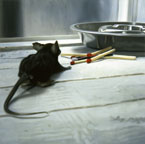Looking at other posts by the same person, I do not believe this person has identified themselves as Ms. Reese or as a UL spokesperson - they've simply added a name and phone number to their post. Perhaps I misunderstood - and if the poster is speaking on behalf of UL, I would appreciate a clear statement to that effect.
As for the question: Does UL really, deliberately cause explosions within the test samples? I can categorically say that yes, they do. I've seen it. Indeed, they do it with several gasses, and various mixtures- from 'lean' to 'rich,' and including 'ideal.' They do their absolute best to blow the things up. I've been in their lab, and have witnessed failures.
Ditto for their temperature measurements on the outside of the samples. After all, the enclosure wouldn't matter if they were hot enough to ignite the fumes anyway. They test them is as disadvantageous a circumstance as they can arrange: dry, dirty, weathered, painted - and, in the case of lights, with as big a bulb as they can cram in there.
Assuming a product has a marking along the lines of "60W TypeA bulb," UL has limited that fixture to a 60 watt bulb. UL has also -in the statements I have reported - accepted that the use of CFL's in place of "type A incandescents' is not an issue, assuming the actual wattage is 60 watts (or less) and the bulb fits without modifying the fixture.
Larry, thank you for the mouse pic



